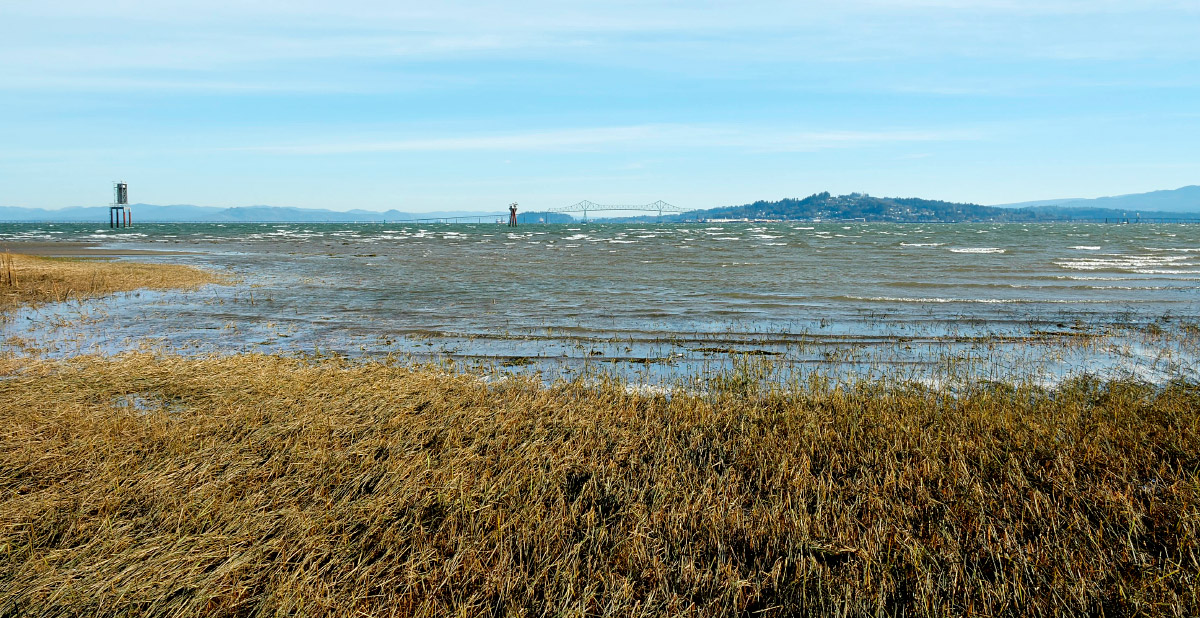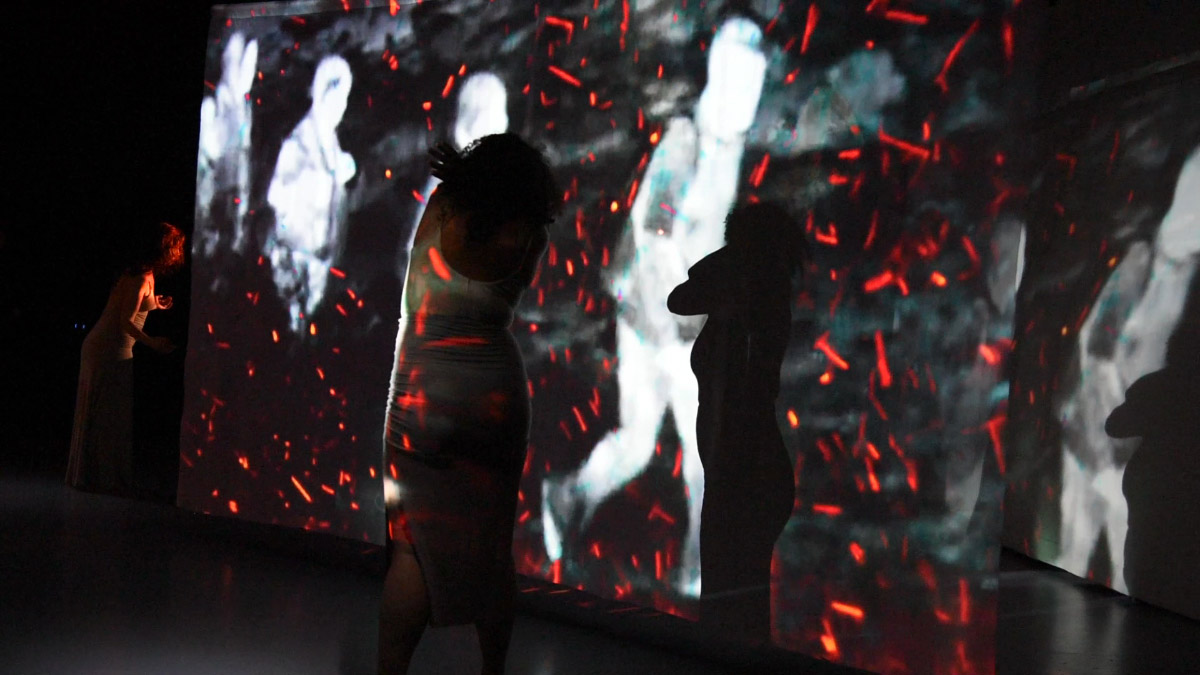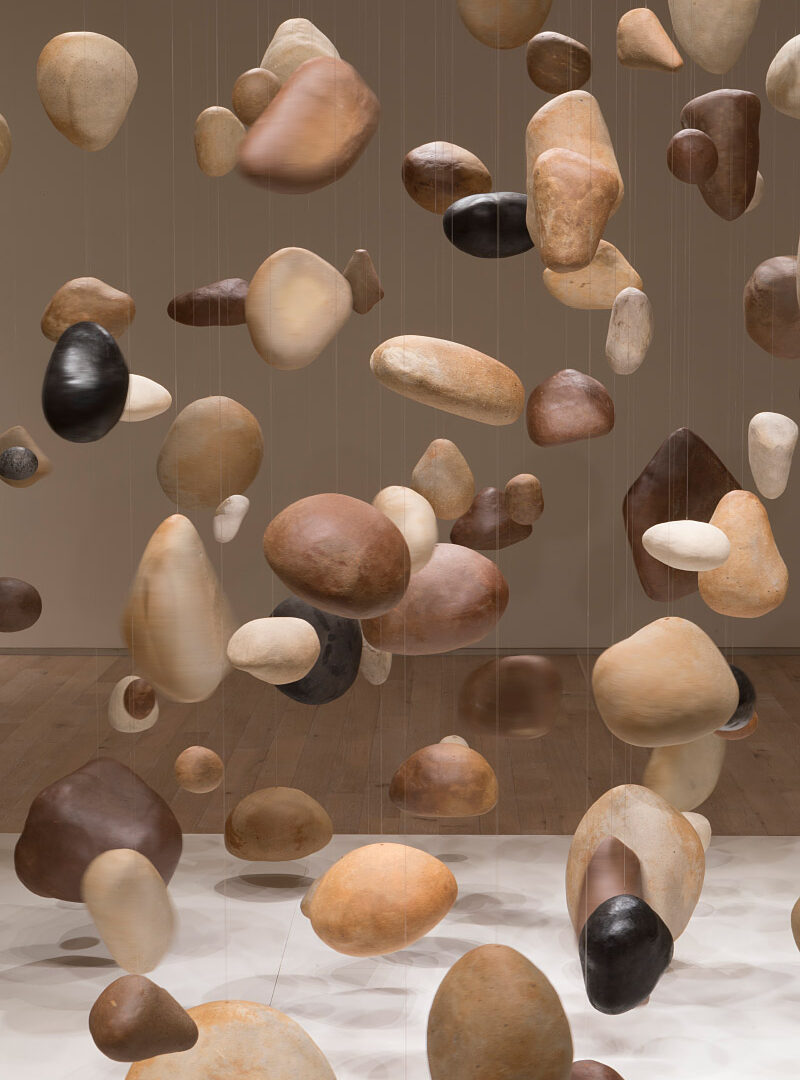Overview
The map is not the territory is part of a triennial series featuring regional artists exploring place and boundaries. This inaugural exhibition focuses along the eastern edge of the Pacific Ocean stretching from Oregon through Washington and Vancouver, B.C., up to Alaska. The artists in this exhibition seek to reconceive and reimagine the Northwest. What does it mean to make art in this region today, and what are the immediate inspirations and pressing concerns that drive each artist’s work?
Through a culmination of studio visits, conversations with the artists, and shared readings, connective themes have surfaced for this exhibition. The map is not the territory is a generative conversation about our connections to the land, efforts toward decolonization, bringing indigenous values to the forefront, and a celebration of the region’s kinship. The artists in the exhibition are Annette Bellamy, Fernanda D’Agostino, Jenny Irene Miller, Mary Ann Peters, Ryan Pierce, Rob Rhee, Henry Tsang, and Charlene Vickers.

Geography connects the artists, but so does a deep sense of place and displacement in a moment when the effects of global climate change create a more urgent reconsideration of systemic values. While Bellamy responds directly to the land and ocean defined by her commercial work, D’Agostino and Peters point to severe moments of disconnect. Miller works to decolonize sexuality through the process of photography and narrative, asking, “How do we as indigenous people decolonize our sexualities, genders, and the way we treat individuals who identify outside of the standard binary male or female?” Tsang works closely with the Chinook Nation to revisit the 1851 Tansy Point Treaty, which was signed in good faith but never ratified by the federal government. To this day, the Chinook Nation is still striving to achieve official recognition. Vickers, despite a long residence in Vancouver, British Columbia, creates installations and performances that expose deep connections to her home and family of Ojibway ancestry, entwining healing body processes closely tied to her homeland. Pierce and Rhee speak to a resilience found in elements in nature that thrive and hold longevity beyond human time.

The exhibition title, the map is not the territory, derives from a remark by philosopher Alfred Korzybski, expressing the essential distinction between an object and its representation—or, more broadly, between our beliefs and the underlying reality. Through the field of general semantics, Korzybski’s intent was to improve the ways people interact with one another and the environment, particularly through critical use of words and other symbols in connection to our living experiences. In this vein, each artist has expanded their own practice and ideas while engaging with each other in preparation for the map is not the territory.
A catalogue will also be published in conjunction with the exhibition, featuring an essay by the curator, as well as essays from Sasha Archibald, Demian DinéYazhi’, and Ashley Stull Meyers to further expand on these broader exhibition themes.
Organized by Grace Kook-Anderson, The Arlene and Harold Schnitzer Curator of Northwest Art, in collaboration with the Museum’s education department.
Artists
Annette Bellamy
(b. 1951 in Seattle, Washington; lives in Halibut Cove, Alaska)
Annette Bellamy’s art represents the aesthetics of a lifestyle rich and full of contrasts. She has lived in coastal communities and fished commercially in Alaska for more than 40 years, and her work references time on the water, days in remote areas, and travel. Bellamy’s roots as a potter are reflected throughout her work, from the materials and processes she uses to the variety of clay bodies and firing techniques. She uses other materials such as metal, fish skin, flowers, and aged wooden tools to extend the possibilities of clay and to tell a distinct, unique story.
Fernanda D’Agostino
(b. 1950 in Trenton, New Jersey; lives in Portland, Oregon)
Fernanda D’Agostino’s installations bridge the divide between the digital and the real to create immersive, time-based works that unfold in surprising ways. Using architecture, interactive video, and sound, she choreographs an experience unique to each viewer, enfolding them in a fully immersive space.
Jenny Irene Miller
(b. 1988 in Nome, Alaska; lives in Anchorage, Alaska)
Jenny Irene Miller, Inupiaq, is originally from Nome, Alaska. Her family roots originate from the village of Kiŋigin, or as it is known in English, Wales, Alaska. She is a photographer who also works with video and sound art. Jenny’s art is concept-driven—packed with themes of histories, current realities, decolonization, and identities—to encourage dialogue on important topics and issues in aims to defeat stereotypes and support healing.
Mary Ann Peters
(b. 1949 in Beaumont, Texas; lives in Seattle, Washington)
Mary Ann Peters is an artist whose combined studio work, installations, public art projects, and arts activism have made noted contributions to the Northwest and nationally for over 30 years. Most recently, her work has focused on the overlap of contemporary events with splintered histories in the Middle East.
Ryan Pierce
(b. 1979 in Fort Bragg, California; lives in Portland, Oregon)
Ryan Pierce makes paintings, sculptures, and texts, and facilitates journeys inspired by the resilience of the natural world. He draws on influences from ecological theory, literature, and folk art to suggest visions of a near future amid dramatic climate change. Pierce is the co-founder of Signal Fire, a group that facilitates wilderness residencies and retreats for artists of all disciplines.
Robert Rhee
(b. 1982 in Bronx, New York; lives in Seattle, Washington)
Robert Rhee is a collector of accidents, a rubbernecker. He is an interdisciplinary artist, writer, and organizer of collaborative artist projects. In his current work, he pursues situations on the precipice of formlessness, where a system is engaged but not controlled. He uses time (duration) to move ideas back and forth between modes: a sculpture conceived like a story, a poem worked on with power tools.
Henry Tsang
(b. 1964 in Hong Kong; lives in Vancouver, British Columbia, Canada)
Henry Tsang is a visual and media artist whose work has been exhibited internationally. His artworks incorporate digital media, video, photography, language and sculptural elements that follow the relationship between the public, community and identity through global flows of people, culture, and capital.
Charlene Vickers
(b. 1970 in Kenora, Ontario; lives in Vancouver, British Columbia, Canada)
Charlene Vickers is an Anishnabe artist based in Vancouver. Raised in Toronto, Vickers explores her Ojibway ancestry through painting, sculpture, and performance exploring memory, healing, and embodied connections to ancestral lands.
Resources
Acknowledgments
- The Arlene and Harold Schnitzer Endowments for Northwest Art
- Exhibition Series Sponsors
- Ed Cauduro Fund of the Oregon Community Foundation
- Northwest Art Council of the Portland Art Museum
- Wolf Kahn and Emily Mason Foundation
- Elizabeth Leach Gallery
- Sue Horn-Caskey and Rick Caskey

